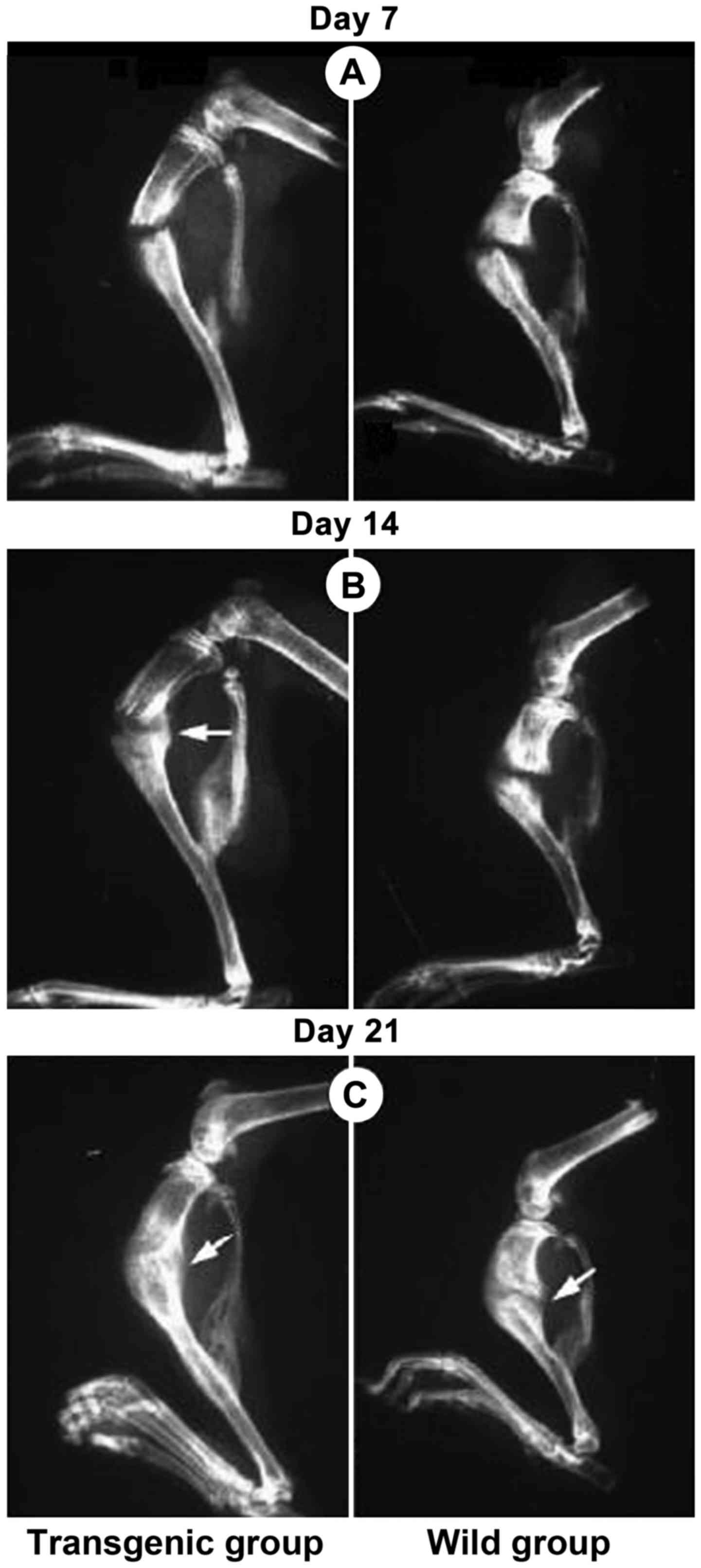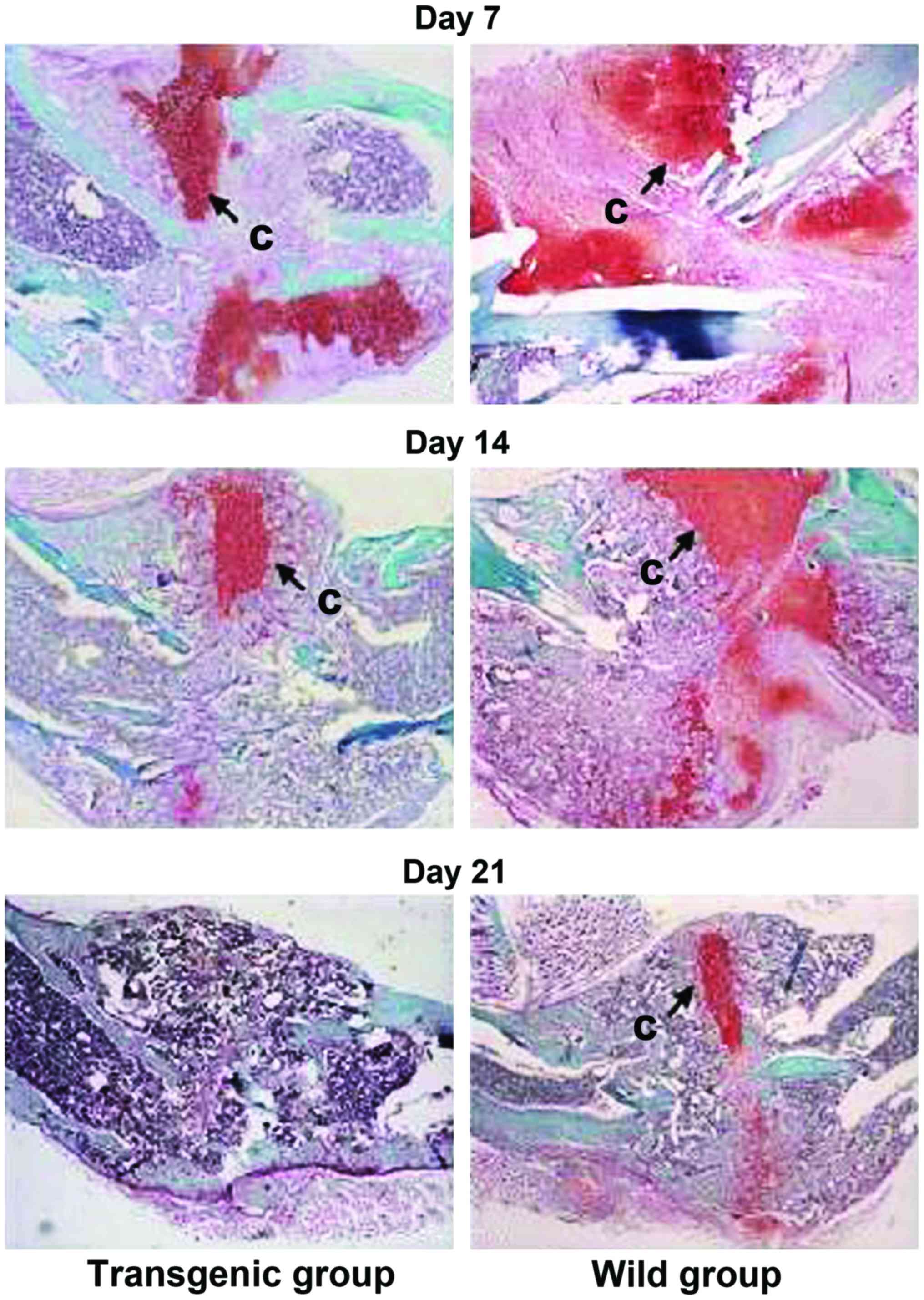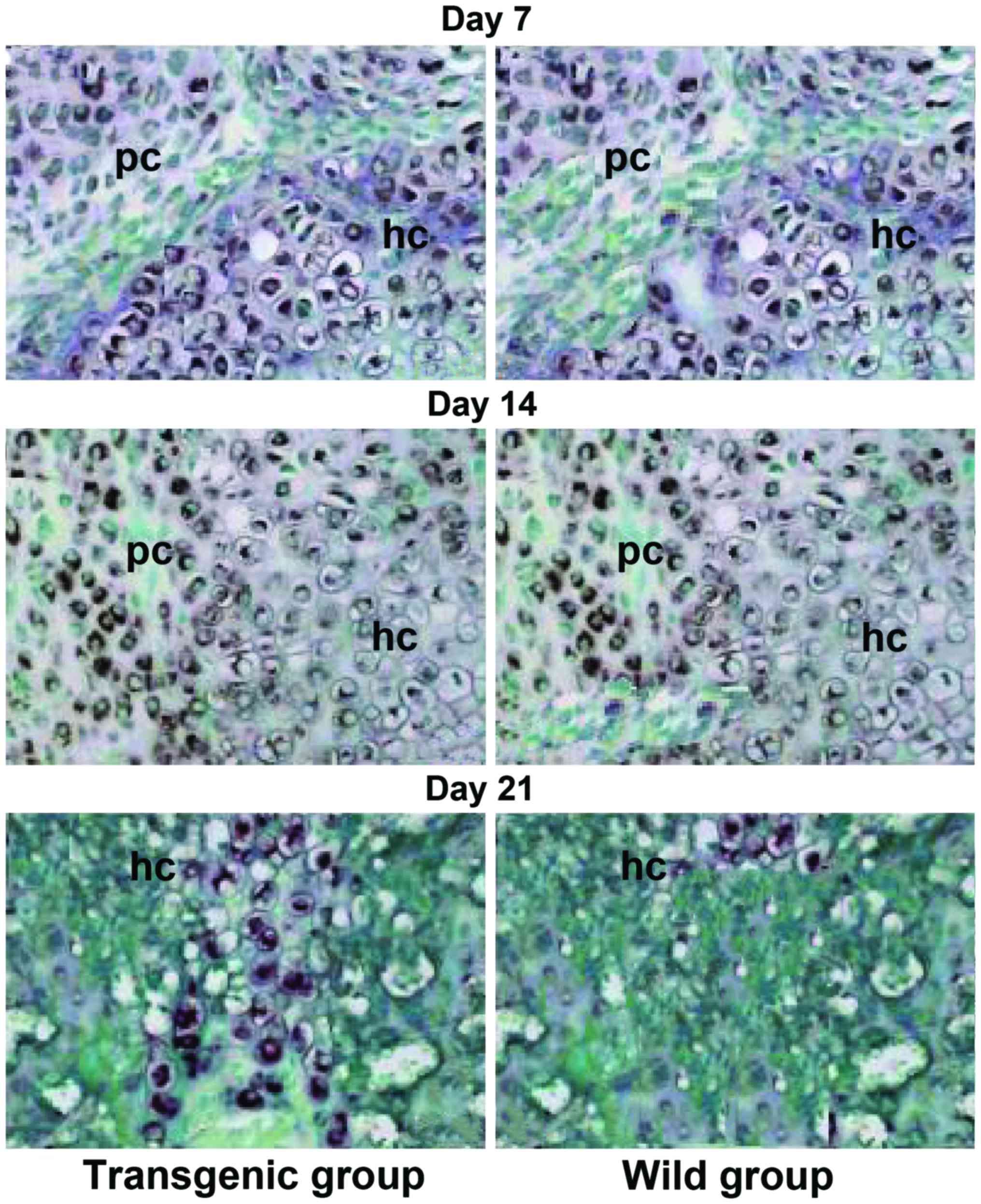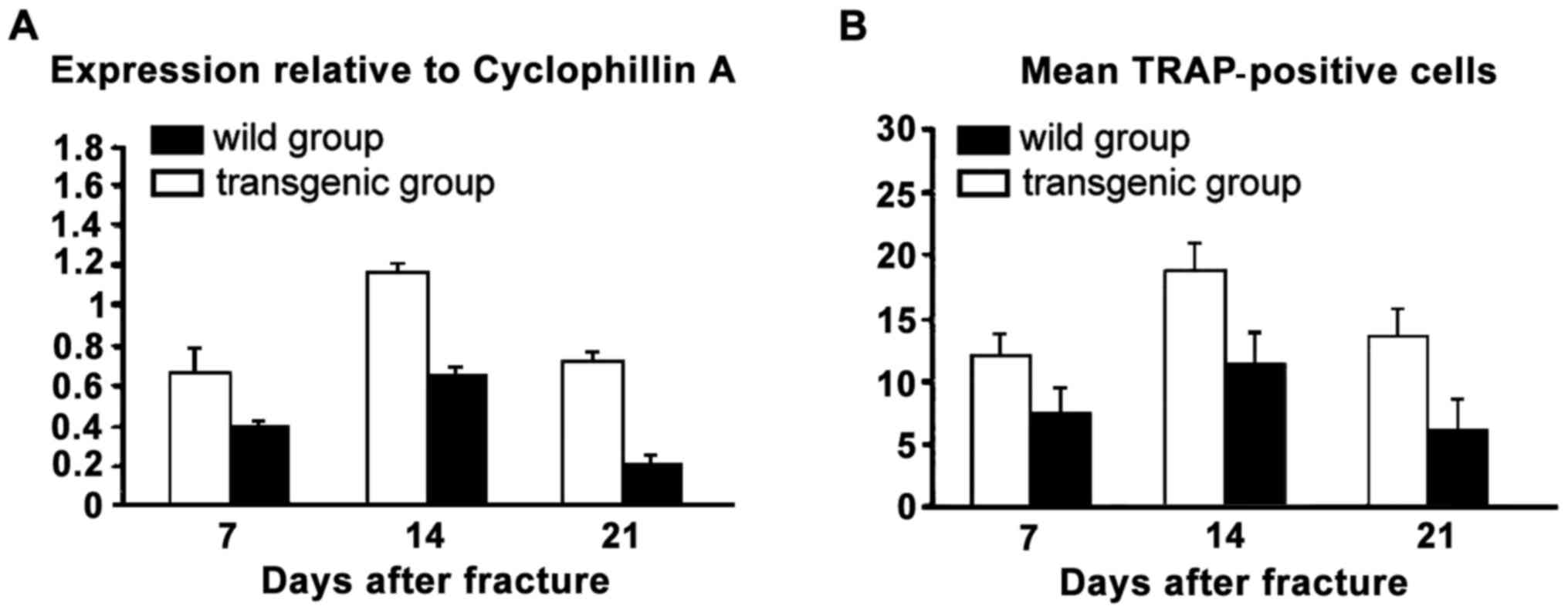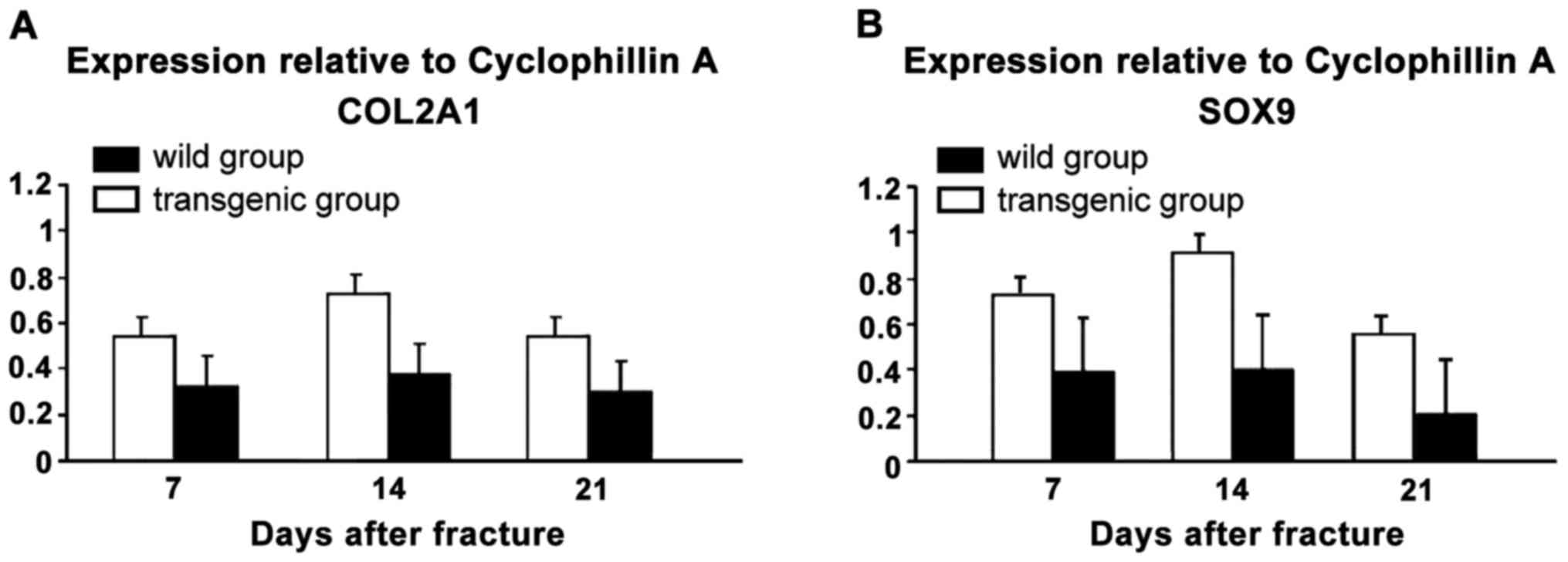Analysis of the mechanism by which nerve growth factor promotes callus formation in mice with tibial fracture
- Authors:
- Published online on: February 7, 2017 https://doi.org/10.3892/etm.2017.4108
- Pages: 1376-1380
-
Copyright: © Sang et al. This is an open access article distributed under the terms of Creative Commons Attribution License.
Metrics: Total
Views: 0 (Spandidos Publications: | PMC Statistics: )
Total PDF Downloads: 0 (Spandidos Publications: | PMC Statistics: )
Abstract
The aim of the present study was to analyze the mechanism by which nerve growth factor (NGF) promotes callus formation in mice with tibial fracture. NGF transgenic homozygotic mice and NGF wild homozygotic mice were selected to construct non‑stabilized fracture model of tibia. The mice were sacrificed on days 7, 14 and 21, respectively, and each group had a sample with 8 mice at each point in time. X‑ray radiography and safranin fast green were used to observe fracture healing and in situ hybridization was used to examine the NGF mRNA expression of tibia at each phase of fracture healing. Tartrate-resistant acid phosphatase (TRAP) staining of callus tissue and the expression level of TRAP mRNA were combined to observe osteoclast formation. COL2A1, a chondrocyte differentiation‑related gene in callus, and the mRNA level of SOX9 were combined to observe chondrocyte differentiation. It was found that under X‑ray radiography, the fracture of NGF transgenic homozygotic mice healed in advance (P<0.05). Cartilage and bone tissue were identified by safranin and fast green staining. The residual cartilage on the callus tissue of NGF transgenic homozygotic mice had decreased significantly (P<0.05). The NGF mRNA expression level in each phase of callus formation of NGF transgenic homozygotic mice was significantly higher than that of the wild group (P<0.05). The number of positive cells in NGF‑TRAP staining at each time point after fracture and the NGF mRNA expression level was markedly higher than that of the wild group, and the expression levels of COL2A1 and SOX9 mRNA were distinctively higher than that of the wild group. In conclusion, NGF potentially improves the healing of tibial fracture by osteoclast formation. Additionally, an increase in the number of osteoblasts in the NGF transgenic homozygotic mice compared with the wild‑type mice may be achieved by cartilage differentiation due to NGF increasing the COL2A1 and SOX9 mRNA expression levels.



